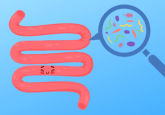An explanation for maternal instinct?

A recent discovery may have given scientists a more complete understanding of the mechanisms underpinning maternal instinct.
New research has discovered differences in the distribution of neurons sensitive to oxytocin in female brains compared with male brains. The work was carried out by Ryoichi Teruyama and a team of student researchers at Louisiana State University (LA, USA).
Oxytocin is a neurotransmitter and hormone found in a variety of species. It is known as the love hormone, and plays a pivotal role in regulating maternal behavior, as well as being responsible for modulating a variety of social behaviors including: maternal care, sexual behavior in both sexes, bonding and anxiety.
“Many researchers have attempted to investigate the difference between the oxytocin system in females versus males, but no one has successfully found conclusive evidence until now. Our discovery was a big surprise,” Teruyama commented.
The team concentrated on the medial preoptic area (MPOA), an area of the brain that forms part of the essential neural circuit that regulates maternal behavior. Using oxytocin receptor (OXTR)-Venus knock-in mice, in which a yellow fluorescent protein is directly inserted into the locus where OXTR is usually located, scientists had the ability to image where OXTR was being expressed.
-
Do C-section babies have weaker immune systems?
-
Paternal age associations: changing parental preconceptions
-
Oxytocin: defeating dependency
Whilst there were no significant differences in the amount of OXTR cells located in the MPOA between male and females, it was demonstrated that neurons expressing OXTR were found in the anteroventral periventricular nucleus (AVPV) of the MPOA in females almost exclusively.
When the female OXTR-Venus mice received ovariectomies, OXTR was no longer expressed in the AVPV. However, expression could be restored upon receiving estrogen replacement therapy. This finding denotes estrogen dependence and the female-specific nature of OXTR expression in the AVPV, indicating that these neurons play a role in the induction of maternal responses.
Previous studies have shown a link between altered expression of OXTR and postpartum depression, which is associated with poor maternal health and substandard child development. This work has the potential to contribute to future treatments and pharmaceuticals for postpartum depression where the OXTR cells are targeted.




